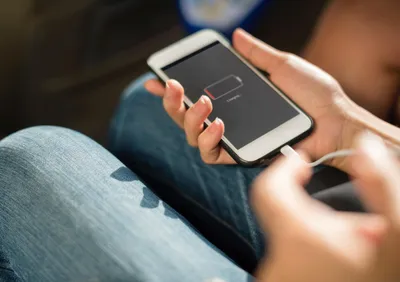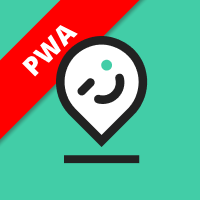RouteYou PWA
Table of contents
- How to install the RouteYou PWA
- How does the RouteYou PWA work?
- Frequently Asked Questions (FAQs)
- What the difference between the RouteYou PWA and the RouteYou App?
The RouteYou PWA, is the mobile website that behaves like an app. You can also 'install' it in the sense that you put an icon on your device's home screen.
Want to know more about the RouteYou PWA? Read more here.
For more information on the difference between the RouteYou App and the RouteYou PWA, click here.
How to install the RouteYou PWA
You need to install the RouteYou PWA directly through the (mobile) website. To do so, follow these steps:
- Take the device you wish to install the RouteYou PWA on
- Click on the icon below to install the RouteYou PWA
- If you perform these actions in Chrome on an Android device, the RouteYou PWA will be immediately installed on your phone. You will find an icon of RouteYou on your phone. This will make it very easy to use RouteYou next time. If you are using Firefox, you will get another instruction to install the PWA via an additional action.
- Click this link to access the instructions for an Apple device
You now have a start button on your phone so you can easily start RouteYou with only one click.
Having problems installing the RouteYou PWA?
How does the RouteYou PWA work?
Menu Structure
The menu structure is just the same as what you are used to on your desktop. Only the screen is much smaller and narrower. So occasionally you will find some differences in the structure of your screen. For example, you get an extra button to display the map.
The main functions on your RouteYou PWA
(1) Searching a route
Watch this video on how to search for a route on your smartphone
![]() Finding a route on your smartphone
Finding a route on your smartphone
(2) Navigate a route
Have you found or planned a route with the RouteYou? In the RouteYou PWA, you can immediately start the navigation:
- Go to the detail page of the desired route.
- Select the map icon under your route title.
- Click on the green start button at the bottom right.
(3) Plan a route on your smartphone
Watch the following video to learn how to quickly create a route on your smartphone.
(4) Recording a route.
When starting (navigating) the route you only need to check "Record route". If you are not logged in, we will ask you to log in.
When you are ready, press stop. Automatically the route will be added to your account. Check "Search Routes" to quickly find your last created route.
If you have a route as GPX via another app you can also upload it to RouteYou.
Other important RouteYou PWA options
Last Viewed
A feature that comes in handy and that you will find on your RouteYou PWA as well as on your desktop, is "Last viewed". What you watched yesterday, while preparing on your desktop, you will find in you recently viewed list on your smartphone today. Usually you wish to do a route that you have viewed recently.
Share routes
Found a nice route? You will also find the "Share route button" on the RouteYou PWA. Read more about that here.
Work offline
Frequently Asked Questions (FAQs)
What about the battery life of smartphones?

Bron: pxhere
The battery life of a smartphone is still a weak point in using the app on your smartphone. Escpecially when navigating, your battery life is consumed quite quickly.
Why does your battery consumption increase when determining your position?
That's because detecting a GPS signal (and thus determining your position) is a burden on your battery. Technically, this has to do with scanning the frequencies of the signals sent by the different satellites.
This is the case with all apps that use a GPS signal almost continuously. The RouteYou PWA is no different in that regard: the less your position is retrieved, the less battery consumption. When navigating, however, you do not want to wait 20 seconds before your position on the map changes, because then you may have already missed the turn.
How long does an average battery last?
Your phone will last for 4 to 5 hours with a full battery.
A good rule of thumb is that you use about 20% to 25% of your battery per hour when navigating with your smartphone. This is a guideline, the actual consumption also depends on the quality and age of your battery.
Be aware! If your battery power is running to its end, it will deteriorate faster than at the beginning. So if you start at a full 100%, you will be at 80% after about an hour. However, if you only have 20% battery at the start, you will probably be at the end of your battery after 45 min.
Tips to extend the use of your battery
- Do not set the brightness of your screen too high.
- Turn off your screen if you don't need it. That way you can last a day with one charged battery.
- Turn off other apps you don't need.
- If you can, don't let your battery run out, because that's not good for your battery life.
- Always take a charging cable with you: if you take a break somewhere to eat for example, you can ask whether you can literally charge your battery.
- Battery packs or power banks are - off course- the solution Praces vary between 30 and 100 euros. You can find some good solutions here.
- With the new RouteYou app, you don't have to leave your screen on anymore, which also makes your battery last a bit longer. You can read more about it here.
Why can I use my GPS device for a full day?
Specifically made GPS devices such as Mio, Wahoo, Garmin, ... usually last much longer than a day. Most of them allow you to change batteries, but with a charged GPS you can usually continue for several days. How come? Some tricks from the GPS bag of tricks:
- Your GPS processor is much less powerful than the one of your telephone. Don't forget that your current phone has a much more powerful processor than the first PC you ever bought. That is why it can do so many fantastic things like playing videos, taking beautiful pictures, teleconferencing, ... But all that comes at a cost. And that is not only the price of your phone but also that of energy. Your GPS and the additional processor have been chosen to do what it should do: navigate. It is not as multifunctional and less powerful, but it is much more energy efficient.
- Your GPS has a screen that consumes much less energy than the screen of your smartphone. As such, your smartphone has much nicer colors. Some GPS devices even have a passive screen.
- Finding which satellites send out a signal by scanning frequencies is also a high-energy affair. That is why many GPS devices have a frequency reference table that depends on your position and time. That table therefore knows that when you are at location LAT, LONG at time xx:xx, which satellites are "visible" for your GPS. So it doesn't have to check the frequencies of the satellites that aren't visible. As a result you can save some energy. But that trick can also be applied to your smartphone.
So it is give and take kind of thing.
How do I return to the previous page?
Depending on your device, this operation is slightly different:
- On iPhone, you can simply swipe from the left side of your screen to the right.
- On Android devices, you can use the back button at the bottom of your screen.
- On your laptop or computer, you can use the alt + left arrow shortcut.
